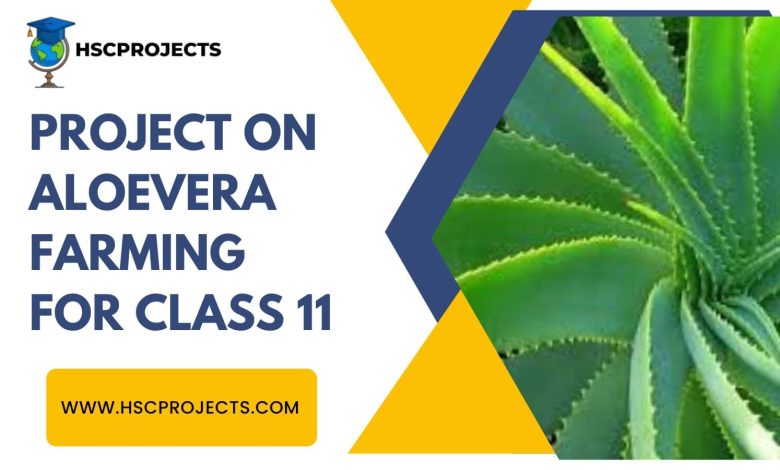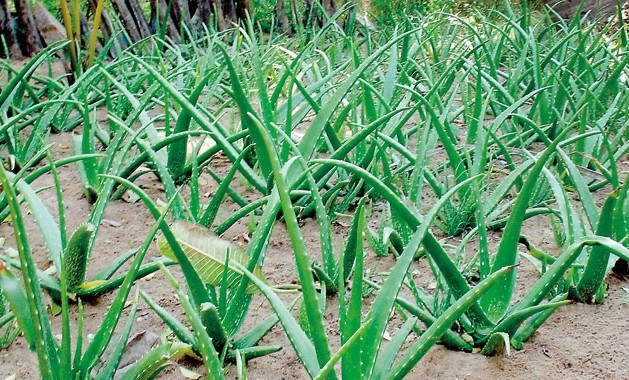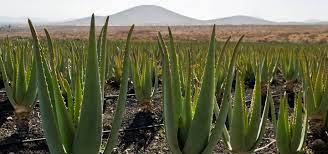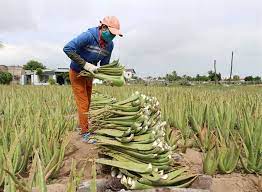
Project On Aloe vera Farming For Class 11
Acknowledgement:
I take this opportunity to extend my heartfelt gratitude and appreciation to [Teacher’s Name], whose unwavering guidance and support have been instrumental in shaping this project on Aloe Vera farming. Their profound knowledge, dedication, and encouragement have illuminated my path throughout this endeavor.
Navigating the intricacies of agricultural practices and research would have been considerably more challenging without the benevolent guidance of [Teacher’s Name]. Their willingness to share their expertise, answer my queries, and provide insightful suggestions has significantly enriched my comprehension of the subject matter.
It is not just their academic expertise that I am thankful for, but also their commitment to nurturing curiosity and fostering a deep understanding of the topic. [Teacher’s Name] has not only imparted knowledge but has also kindled a passion within me for sustainable farming practices and the remarkable potential of Aloe Vera cultivation.
Furthermore, I am grateful for the patience and time that [Teacher’s Name] invested in reviewing my project drafts, offering constructive critiques, and motivating me to refine my work. Their consistent encouragement has bolstered my confidence and spurred me to strive for excellence.
In closing, I am humbled and indebted to [Teacher’s Name] for their pivotal role in shaping my academic journey and enhancing my comprehension of Aloe Vera farming. Their mentorship will undoubtedly resonate in my future endeavors, and I am honored to have had the privilege to learn under their guidance.
Introduction:
Aloe Vera (Aloe barbadensis miller) stands as a botanical marvel, celebrated across cultures for its remarkable array of medicinal and cosmetic attributes. This resilient succulent has captured human fascination for centuries, with its succulent leaves harboring a treasure trove of natural remedies and skincare wonders. As our contemporary world seeks sustainable alternatives and reconnects with nature’s bounties, Aloe Vera takes center stage, beckoning us to explore its multifaceted potential.
Aloe Vera farming has emerged as a beacon of innovation and practicality, embodying the synergy between tradition and modernity. This plant’s ability to thrive in diverse climatic conditions and its adaptability to various cultivation practices have contributed to its global significance. As concerns about the environment, health, and economic sustainability deepen, the cultivation of Aloe Vera has gained unprecedented importance.
The purpose of this project is to unveil the captivating journey of Aloe Vera farming, shedding light on its cultivation intricacies, its role in fostering economic growth, and its extensive applications in diverse fields. This venture into the world of Aloe Vera promises to unravel not only the scientific dimensions of its cultivation but also the cultural, economic, and ecological dimensions that underscore its prominence.
Through meticulous exploration, we aim to demystify the enigma of Aloe Vera by dissecting its cultivation practices, ranging from the preparatory stages of soil enrichment to the precise techniques of propagation. Beyond the mechanics of farming, we shall delve into the intricate tapestry of its significance, embracing its economic potential as a driver of livelihoods and prosperity.
Moreover, this project aspires to illuminate the multitude of ways in which Aloe Vera finds itself woven into the fabric of daily life. From its therapeutic applications in traditional medicine to its integration into modern cosmetics, Aloe Vera exemplifies nature’s capacity to cater to human well-being. Its leaves, containing a rich reservoir of nutrients and bioactive compounds, symbolize a harmonious partnership between humans and the environment.
In essence, this project embarks on a journey to fathom the depths of Aloe Vera farming, transcending the boundaries of a mere botanical pursuit. By undertaking this voyage, we hope to not only cultivate knowledge but also cultivate an appreciation for the intricate interconnectedness that exists between nature, science, culture, and commerce.

Cultivation Practices:
– Soil Preparation: Aloe Vera thrives in well-drained sandy loam soils with a slightly acidic to neutral pH. The soil should be enriched with organic matter to enhance its water-holding capacity and nutrient content.
– Planting: Aloe Vera is usually propagated through offshoots or suckers. Planting is done during the spring season. Adequate spacing between plants should be maintained to prevent overcrowding.
– Irrigation: Aloe Vera requires moderate watering. Overwatering should be avoided, as it can lead to root rot. Drip irrigation is preferred to minimize water wastage.
– Fertilization: Organic fertilizers rich in nitrogen, phosphorus, and potassium are beneficial for Aloe Vera growth. Application rates should be adjusted based on soil nutrient levels.
– Pest and Disease Management: Common pests like aphids and mites can affect Aloe Vera. Neem oil and insecticidal soaps can be used for pest control. Disease prevention includes proper spacing, good ventilation, and avoiding waterlogged conditions.

Harvesting and Post-Harvest Practices:
The culmination of the patient nurturing bestowed upon Aloe Vera plants arrives in the form of the harvest—a pivotal moment that encapsulates both the plant’s readiness and its potential to contribute to various industries. The process of harvesting Aloe Vera leaves is an art that requires precision, care, and an understanding of the plant’s lifecycle.
Optimal Timing and Criteria:
Aloe Vera leaves are ready for harvest when they have attained a suitable size and thickness, typically occurring after 2-3 years of diligent growth. This duration allows the plant to accumulate a substantial reserve of the valuable gel within its fleshy leaves. Optimal size and thickness are essential indicators of the gel’s concentration of bioactive compounds, which bestow Aloe Vera with its renowned therapeutic and cosmetic attributes.
Harvesting Technique:
The harvesting process is a delicate affair, demanding a gentle touch to preserve the integrity of the plant and its precious gel. Careful consideration is given to the location of the cut, which is made close to the base of the leaf using a sharp, clean tool. This strategic approach ensures the removal of the mature leaf while minimizing any potential damage to the remaining plant.
Latex Draining:
Once the leaf is harvested, a crucial step ensues—allowing the latex, a yellowish substance with potential laxative properties, to drain. This drainage is facilitated by placing the harvested leaves upright in a container, thus preventing the latex from mingling with the gel that lies beneath the leaf’s protective outer layer. By allowing the latex to drain, the gel is effectively purified, ensuring the final product’s quality and safety.
Utilization of Harvested Gel:
The harvested gel stands as a versatile commodity, ready to embark on various transformative journeys. It can be employed in its raw state, immediately harnessed for its therapeutic applications or incorporated into homemade cosmetic concoctions. Alternatively, the gel can undergo a systematic process of extraction, filtration, and stabilization, culminating in an array of commercial products.
Commercial Processing:
The versatility of Aloe Vera gel is manifested through its transformation into an assortment of consumer products. Cosmetic giants harness its innate hydrating and rejuvenating properties to formulate moisturizers, lotions, and creams that grace the shelves of beauty stores. The gel’s culinary and nutritional potential is realized through the creation of Aloe Vera juices and dietary supplements that cater to health-conscious consumers seeking natural remedies.

Economic Importance of Aloe Vera Farming:
In the realm of agriculture, where the pursuit of sustainable practices intersects with the aspirations of economic growth, Aloe Vera farming emerges as a beacon of promise and prosperity. Its economic significance is not merely a product of chance; it is a calculated convergence of nature’s endowment and human ingenuity.
Rising Demand for Aloe Vera-Based Products:
Aloe Vera’s meteoric rise to prominence within the pharmaceutical, cosmetic, and healthcare industries is a testament to its intrinsic value. The plant’s gel, replete with a plethora of bioactive compounds, has become a prized ingredient in the formulation of various products. In the pharmaceutical sector, Aloe Vera’s anti-inflammatory, antimicrobial, and wound-healing properties make it a prime candidate for medicinal applications. In the realm of cosmetics, its hydrating, soothing, and rejuvenating qualities elevate it to a staple ingredient in skincare and beauty formulations. This escalating demand for Aloe Vera-based products positions the plant as a sought-after commodity, creating a lucrative market that farmers can tap into.
Diversification and Value Addition:
Aloe Vera farming’s economic prowess extends beyond the cultivation of the plant itself. It beckons farmers to venture into value-added processes, turning harvested gel into an array of marketable products. The transformation of raw Aloe Vera gel into medicinal ointments, health supplements, cosmetics, and beverages presents opportunities for entrepreneurship and innovation. As farmers explore avenues for processing, packaging, and branding, they contribute to the expansion of the value chain, thus increasing the economic footprint of Aloe Vera farming.
Income Generation and Employment Opportunities:
The robust demand for Aloe Vera-based products translates into tangible benefits for farmers and communities. Aloe Vera farming presents a viable avenue for income generation, especially in regions conducive to its cultivation. As the farming of Aloe Vera requires a relatively small land footprint and moderate resource inputs, it becomes an attractive option for small-scale farmers and those seeking diversification. The establishment of Aloe Vera farms creates employment opportunities, encompassing tasks such as cultivation, harvesting, processing, and marketing. This employment spectrum not only generates livelihoods but also fosters skill development and economic resilience within local communities.
Sustainability and Environmental Stewardship:
Aloe Vera’s economic importance is intertwined with the principles of sustainability and environmental stewardship. Its hardiness, minimal water requirements, and ability to thrive in diverse climatic conditions align with the ethos of responsible agriculture. Aloe Vera farming thus presents an avenue for income generation that is harmonious with ecological balance, promoting a holistic approach to economic growth.
Medicinal and Therapeutic Uses of Aloe Vera:
Deep within the heart of nature’s pharmacy lies Aloe Vera, a time-honored remedy whose healing prowess has transcended epochs. With a lineage steeped in centuries of traditional wisdom, Aloe Vera has emerged as a veritable treasure trove of medicinal and therapeutic marvels.
An Ancient Elixir of Healing:
Aloe Vera’s journey as a healing agent dates back to antiquity, where civilizations across the globe harnessed its innate properties for remedies and elixirs. Its gel, extracted from the succulent leaves, contains a symphony of bioactive compounds that bestow it with remarkable therapeutic attributes.
Anti-Inflammatory Guardian:
Aloe Vera’s anti-inflammatory capabilities have become legendary. The gel’s bioactive constituents, including enzymes, fatty acids, and hormones, orchestrate a symphony of soothing relief for inflamed tissues. Whether applied topically or ingested, Aloe Vera holds the power to temper inflammation, offering solace to conditions ranging from sunburns to arthritic joints.
The Antioxidant Sentinel:
Embedded within Aloe Vera’s gel are potent antioxidants, nature’s vigilant sentinels against oxidative stress and cellular damage. These antioxidants, including vitamins C and E, beta-carotene, and flavonoids, engage in a dance of defense, neutralizing harmful free radicals that contribute to aging, chronic diseases, and compromised immunity.
Guardian of Skin Harmony:
Aloe Vera’s touch is akin to a gentle embrace for the skin, a sanctuary of solace for a spectrum of dermal woes. Its gel, when applied topically, acts as a natural balm for burns, wounds, and abrasions, expediting the healing process through its ability to stimulate cell regeneration and enhance blood flow. Its emollient nature moisturizes and hydrates, rendering it an ally against dryness, itching, and skin irritations.
A Soothing Balm for Digestive Distress:
Beyond the realm of skincare, Aloe Vera extends its remedial embrace to digestive afflictions. Consumed internally, its gel forms a cooling balm for gastrointestinal discomfort, soothing irritable bowels and contributing to regularity. Aloe Vera’s enzymatic composition assists in digestion and nutrient absorption, fostering a harmonious digestive ecosystem.
A Beacon in Alternative Medicine:
The resurgence of interest in alternative medicine has cast Aloe Vera into the spotlight, with its holistic potential garnering admiration from practitioners and patients alike. Its integration into herbal medicine, naturopathy, and complementary therapies underscores its allure as a versatile and natural remedy.
Conclusion:
In summation, the journey through the realm of Aloe Vera farming reveals a tapestry woven with threads of economic opportunity, health and well-being, and a profound connection to nature. Aloe Vera farming stands not only as a field of cultivation but as a realm of promise, where the nurturing of these succulent leaves unfolds into a symphony of benefits that extend far beyond the boundaries of the farm.
The allure of Aloe Vera farming as a catalyst for economic growth is undeniable. Its position at the nexus of pharmaceutical, cosmetic, and healthcare industries echoes a harmonious marriage between commerce and nature’s treasures. The burgeoning demand for Aloe Vera-based products paints a portrait of prosperity for farmers and entrepreneurs, inviting them to sow the seeds of both financial gain and innovation.
The simplicity of Aloe Vera’s cultivation practices belies the richness it brings to agriculture. Its adaptability to diverse climates, minimal resource requirements, and relatively short gestation period render it accessible to both small-scale and large-scale farmers. This inclusivity not only democratizes the benefits of Aloe Vera farming but also showcases its potential to alleviate food and economic insecurity in various communities.
Yet, Aloe Vera’s contribution transcends the realm of profits. Its leaves, imbued with a myriad of bioactive compounds, have been harnessed by civilizations across time for their healing touch. From tending to burns and wounds to offering respite to digestive distress, Aloe Vera stands as a repository of natural remedies, a testament to the synergy between human health and the environment.
As we gaze into the verdant fields of Aloe Vera, we glimpse a future where agriculture is not merely a source of sustenance, but a harmonious dance between nature’s bounty and human aspirations. Aloe Vera farming encapsulates the essence of sustainability, where economic prosperity intertwines with ecological balance, and where the well-being of individuals and communities flourishes.
In essence, Aloe Vera farming beckons us to embrace a future where growth is not measured solely in financial terms, but also in the lives enriched, the ecosystems nurtured, and the legacy of well-being bestowed upon generations. As we tread this path, we stand as stewards of a profound legacy, where the tendrils of cultivation reach not only into the earth, but into the very fabric of human health, prosperity, and harmony.
Certificate of Completion
Certificate of Achievement
This is to certify that
[Your Full Name]Has successfully completed the project on
Aloe Vera Farming
In recognition of your dedication, hard work, and commitment to learning in the field of agriculture and Aloe Vera cultivation.
[Your Signature] [Date]In order to download the PDF, You must follow on Youtube. Once done, Click on Submit
Follow On YoutubeSubscribed? Click on Confirm
Download Project On Aloe vera Farming For Class 11 PDF






